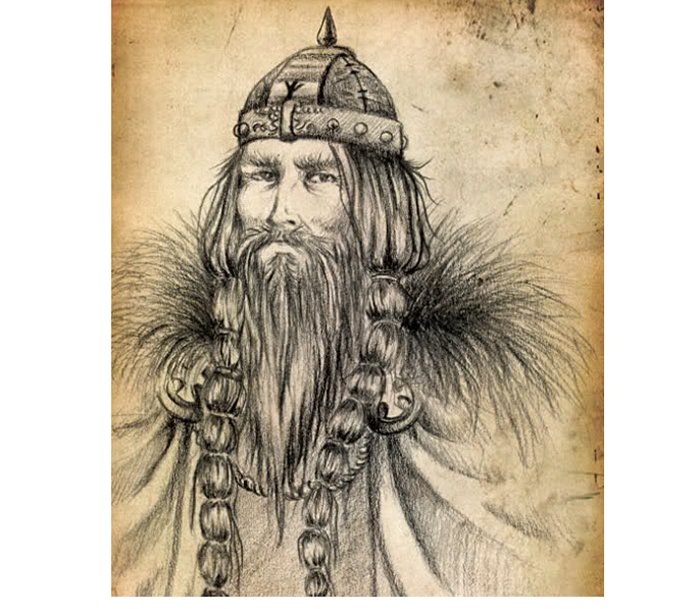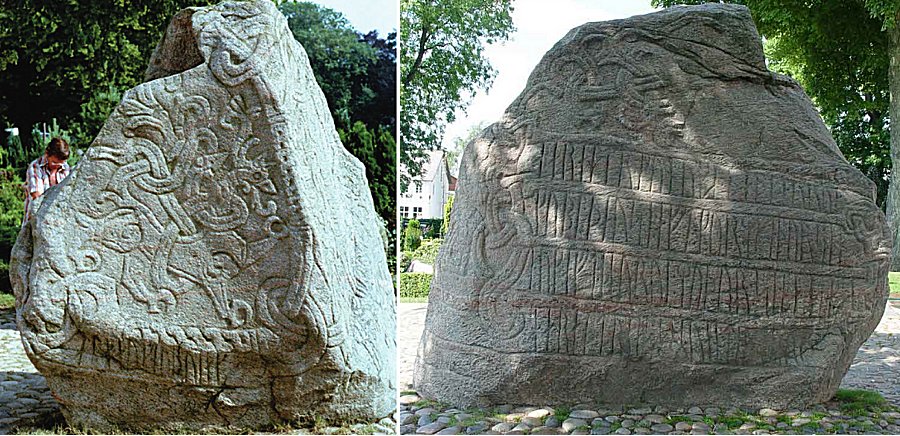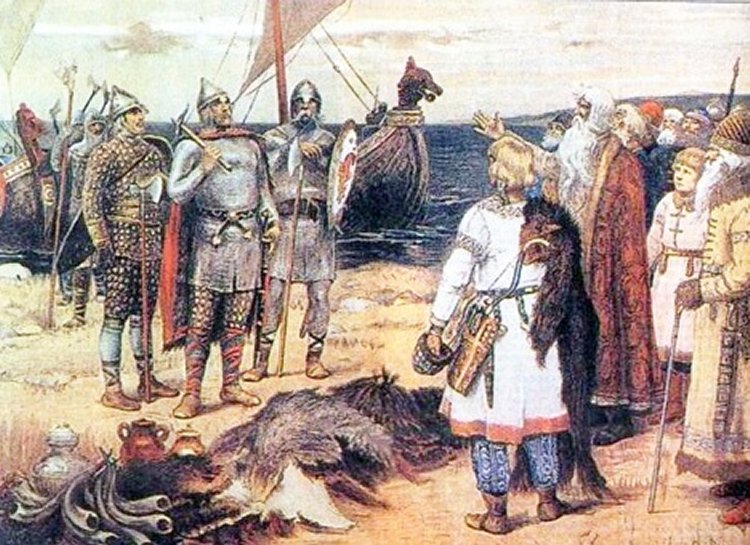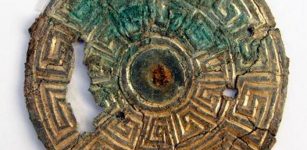Legendary Harald ‘Bluetooth’ King of Denmark – ‘Who Made The Danes Christian’
A. Sutherland – MessageToEagle.com –“… Harald who conquered for himself the whole of Denmark and Norway and made the Danes Christian.” – Inscription on the Jelling Stone.
Harald Bluetooth was the younger son of Gorm the Old and Queen Thyra. His father who was also called Gorm the Languid was the first historically recognized King of Denmark, reigning from c. 936 to his death c. 958.
The year of Bluetooth’s birth is unknown; however, according to records of his achievements, he was born sometime around 920 AD.

Harald “Bluetooth” Gormsson was King of Denmark for nearly 30 years beginning in approximately 958 AD when his brother and favored son of Gorm the Old was killed in England during attacks near Ireland.
During his reign, Bluetooth united the outlying tribes of Denmark. He defended his people from many Norwegian and German incursions while overseeing the completion of vast construction projects that strengthened his country’s defenses.
He proved to be a skilled leader of his nation both on and off the battlefield.
This 12th-century gilt plate from Tamdrup Church in Denmark is the oldest illustration of King Harold Bluetooth’s baptism.
Bluetooth is equally known for casting off the Norse pagan traditions and, becoming a devout Christian who strove to peacefully convert the people of Denmark during his rule.
He also commissioned many important construction projects in his country during his reign.
In Bluetooth’s legacy there are so-called “runestones” – monuments that usually honored the dead and their deeds.

He used the very best counselors and craftsmen for the job. The carving on the stone was carried out by two people: the decorations came first, and then the runes were struck by a runic craftsman. It took about a full year to complete the entire job.
Bluetooth wanted to be remembered for some specific achievements; therefore he erected a runic stone intended to last forever.
He converted to Christianity in 965 and erected a runestone in Jelling, with the inscription:

“… Harald who conquered for himself the whole of Denmark and Norway and made the Danes Christian.”
This runestone is today considered the most well- known example of runic inscriptions in Denmark. Featuring an easily distinguished image of Christ on the cross, the Jelling Stone erected by Bluetooth is often referred to as the “Baptism Certificate of Denmark,” which symbolizes the end of the polytheistic traditions followed by much of the Danish population.
He also honored his parents by Commissioning a second Jelling Stone, which was found in the town of Jelling, Denmark.
Harald “Bluetooth” Gormsson died of wounds received in an uprising against him in 985 or 986.
The success of Harald Bluetooth and people like him was evidence that the Viking Age was beginning to wane.
MessageToEagle.com via AncientPages.com
Expand for referencesRelated Posts
-
 Was Quetzalcoatl An Extraterrestrial From The Pleiades?
No Comments | Jul 24, 2014
Was Quetzalcoatl An Extraterrestrial From The Pleiades?
No Comments | Jul 24, 2014 -
 Flower Of Life: Ancient Sacred Geometry Symbol And Blueprint Of The Universe
No Comments | Oct 8, 2016
Flower Of Life: Ancient Sacred Geometry Symbol And Blueprint Of The Universe
No Comments | Oct 8, 2016 -
 DNA From Mysterious Hominin In China Suggests Native Americans’ East Asian Roots
No Comments | Jul 19, 2022
DNA From Mysterious Hominin In China Suggests Native Americans’ East Asian Roots
No Comments | Jul 19, 2022 -
 Phenomenon Of True Polar Wander: What Is It?
No Comments | Jun 14, 2017
Phenomenon Of True Polar Wander: What Is It?
No Comments | Jun 14, 2017 -
 Neanderthal And Denisovan Blood Groups Deciphered And The Results Are Surprising
No Comments | Aug 2, 2021
Neanderthal And Denisovan Blood Groups Deciphered And The Results Are Surprising
No Comments | Aug 2, 2021 -
 Why Was Dorset Ancient Mega Henge Built In Such A Hurry?
No Comments | Nov 5, 2020
Why Was Dorset Ancient Mega Henge Built In Such A Hurry?
No Comments | Nov 5, 2020 -
 Skull From Broken Hill, Zambia Is Relatively Young – New Analysis Shows
No Comments | Apr 2, 2020
Skull From Broken Hill, Zambia Is Relatively Young – New Analysis Shows
No Comments | Apr 2, 2020 -
 1,000-Year-Old British Buckle Discovered In Danish Viking Grave
No Comments | Mar 20, 2016
1,000-Year-Old British Buckle Discovered In Danish Viking Grave
No Comments | Mar 20, 2016 -
 10 Ancient Love Symbols
No Comments | Jan 5, 2016
10 Ancient Love Symbols
No Comments | Jan 5, 2016 -
 Pandavleni Buddhist Caves: Sculptures, Inscriptions And Sophisticated Water Management System
No Comments | Dec 8, 2016
Pandavleni Buddhist Caves: Sculptures, Inscriptions And Sophisticated Water Management System
No Comments | Dec 8, 2016

